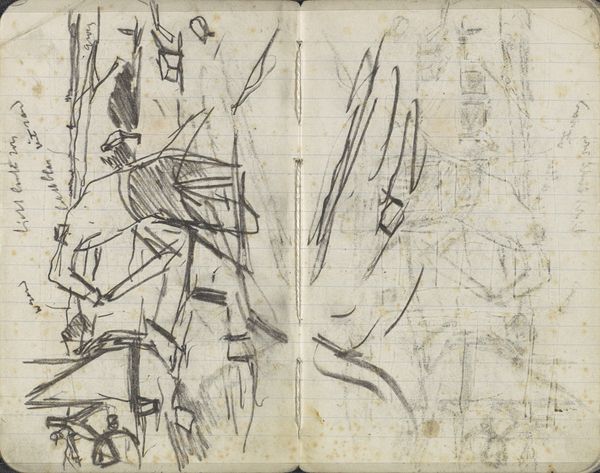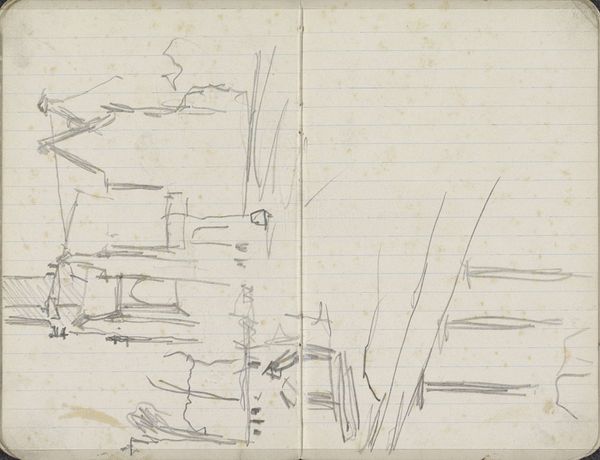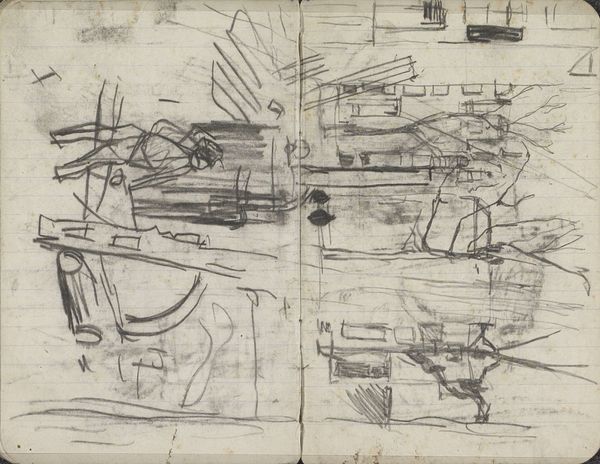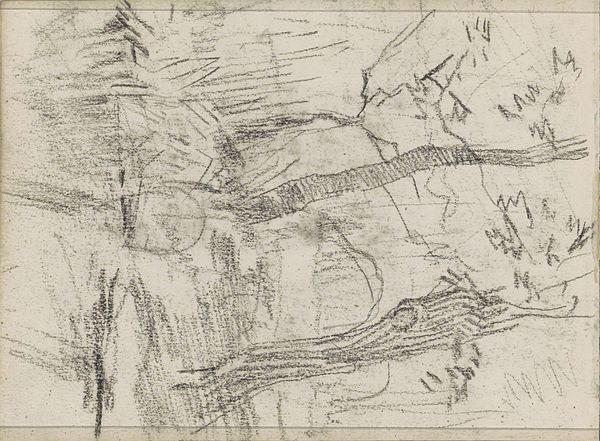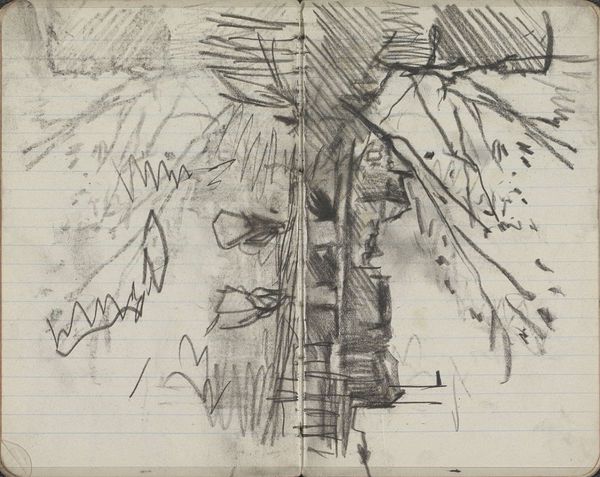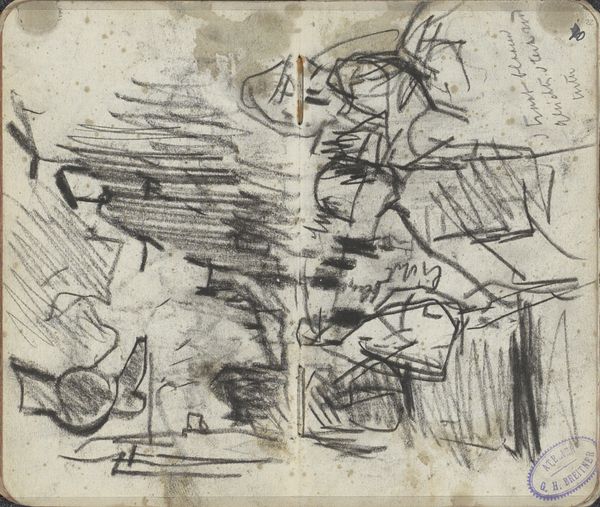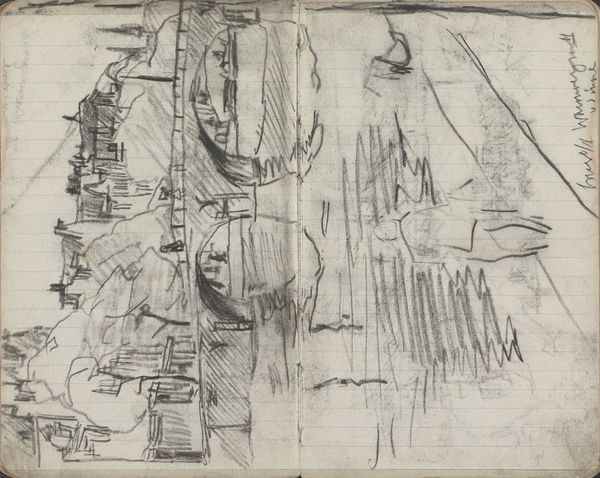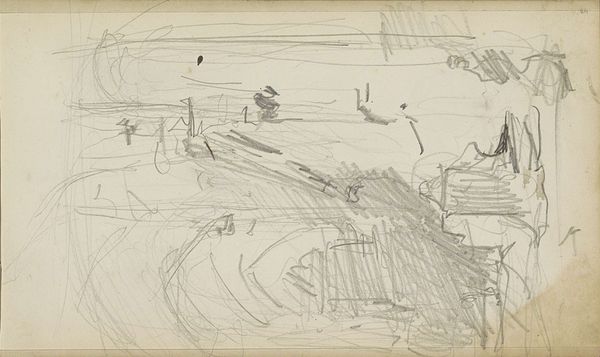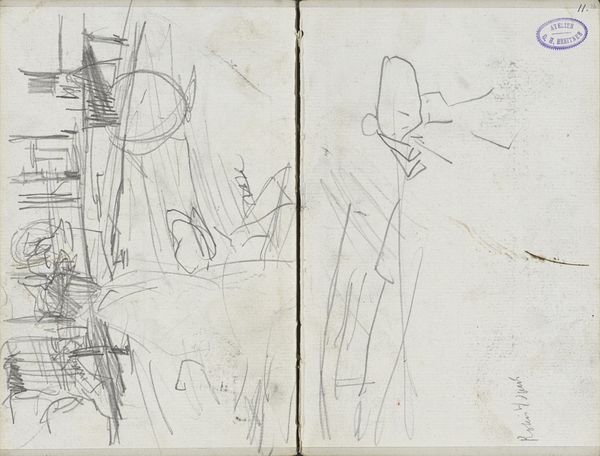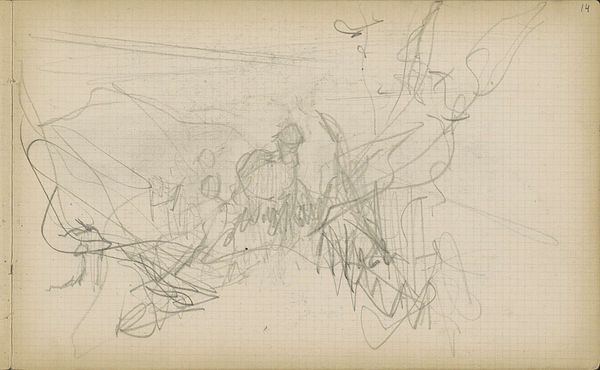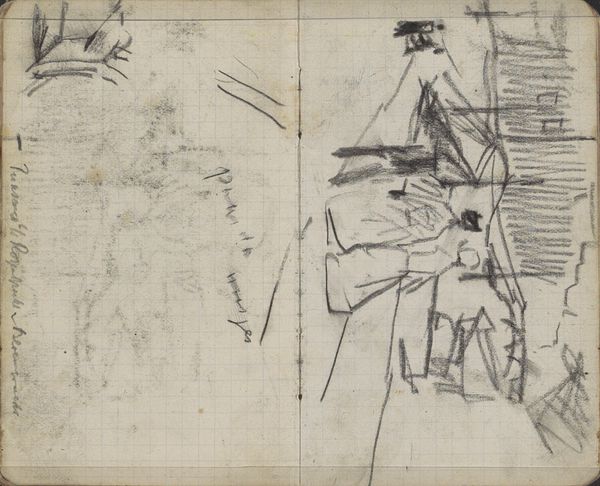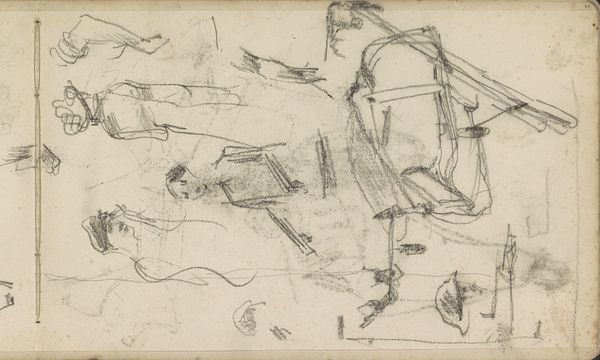
Bouwvakkers aan het werk, mogelijk op de Westermarkt te Amsterdam 1898 - 1902
0:00
0:00
georgehendrikbreitner
Rijksmuseum
Copyright: Rijks Museum: Open Domain
Curator: Look at this fascinating sketch, "Bouwvakkers aan het werk, mogelijk op de Westermarkt te Amsterdam" by George Hendrik Breitner, created sometime between 1898 and 1902. It’s part of the Rijksmuseum collection. Editor: My initial impression is organised chaos, almost. A flurry of lines trying to capture a fleeting moment of intense construction work. There’s such immediacy to the marks. Curator: Indeed, this drawing offers us insight into Breitner's artistic process. We see his rapid, almost shorthand method of documenting the urban landscape and the labor inherent within it. It's done using pencil and pen, a raw, direct translation onto toned paper. You can see Breitner jotted down notes such as ‘sand’ or ‘water’ around the image itself. Editor: Absolutely. Think of the social context! The turn of the century was a period of massive urban expansion in Amsterdam. These construction workers weren't just building structures; they were literally shaping the modern city. It brings up questions of labor, progress, and who benefits from this construction? Who gets to live here, who gets excluded? Curator: And what was Breitner's role? He clearly wasn't one of the laborers, but as a documentarian, he was playing a vital role in preserving their existence in the public imagination, giving worth to the act of labor itself. These were subjects typically omitted from "high" art. How does his choice to represent these laborers reflect broader artistic trends of realism and its growing fascination with everyday life and ordinary subjects? Editor: It's interesting to consider how this sketch, tucked away in a sketchbook, becomes accessible through an institution like the Rijksmuseum. What are the curatorial decisions that elevate this seemingly private study to a publicly exhibited work? Curator: A brilliant point! The institutional framework shapes our understanding. Presenting it prompts us to consider the historical narratives that the museum constructs, particularly concerning depictions of the working class and the urban experience. This is less about an idealized landscape and more about the grit and hustle of building a city. Editor: Thinking about the materials, the paper itself and the pencil are commodities tied to the broader industrial complex. I'm curious about how readily available those art supplies were at that time, what the factories were like that produced them. All that unseen labour supports Breitner’s artistry. Curator: I agree, examining those support structures—both literal and figurative—enriches our engagement with Breitner's work and sharpens our social consciousness, it truly allows one to understand the relationship that art shares with not just those who admire the artwork but also with those who create the foundations for the artists to be capable to generate the work. Editor: I walk away appreciating how a seemingly simple sketch can reveal so much about art's connections to labor, social history, and the ever-evolving cityscape.
Comments
No comments
Be the first to comment and join the conversation on the ultimate creative platform.
